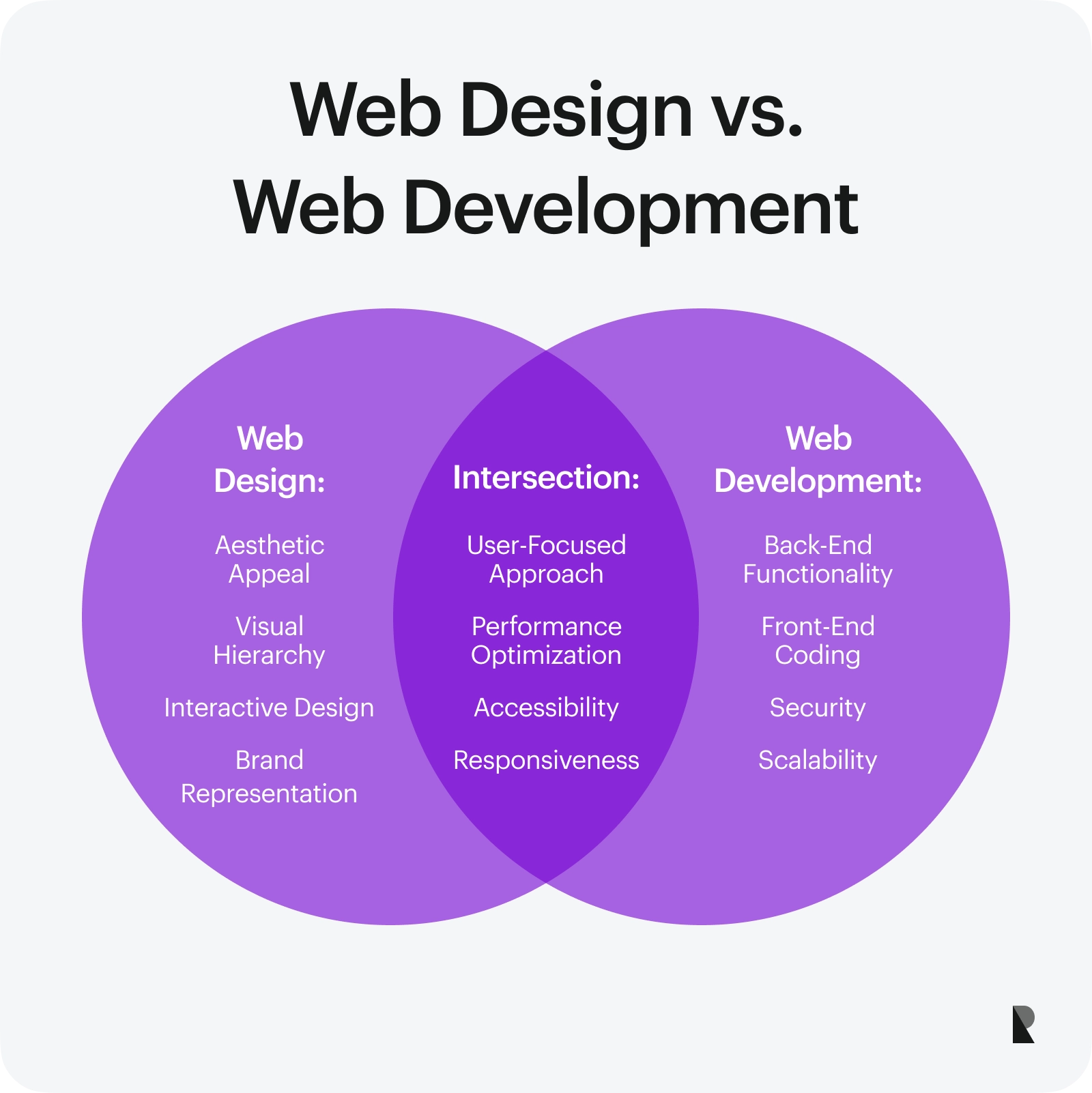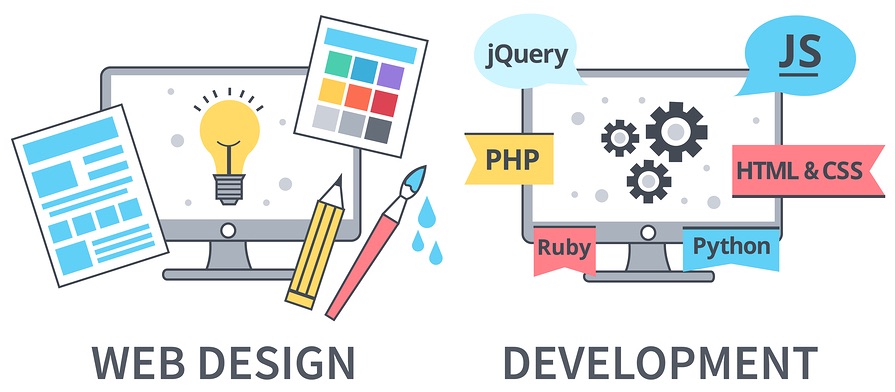Finding the Uses of Web Style for Enhancing User Experience
Web layout substantially influences individual experience across electronic platforms. By concentrating on customer requirements, developers produce sites that are not just visually appealing however easily accessible and likewise functional. Crucial element such as responsive layout and user-friendly navigating play critical functions in improving use. The challenge exists in comprehending just how these components connect to meet advancing user expectations. The exploration of these aspects reveals insights that might change digital interaction.
Recognizing User Requirements and Assumptions
Just how can Web designers effectively align their developments with customer needs and expectations? To attain this, designers need to engage in comprehensive user research to catch the choices, actions, and pain factors of their target market. Utilizing techniques such as surveys, meetings, and usability testing, developers gather useful understandings that direct their decision-making procedure.
Producing individual identities can additionally assist in imagining various customer sections, guaranteeing that layout options reverberate with genuine users. In addition, designers should focus on intuitive navigating and clear phone calls to activity, which assist in smooth interactions.
The Relevance of Responsive Design
As customers increasingly accessibility websites on a variety of tools, responsive style has actually come to be essential for developing a positive customer experience. This method permits websites to adjust perfectly to various screen sizes, making certain that material is accessible and quickly readable, no matter of whether an individual gets on a tablet computer, desktop computer, or smart device .
Receptive design improves usability by providing a constant experience, lowering the demand for too much scrolling or zooming. Additionally, online search engine prefer receptive web sites, which can improve a website's visibility and reach. This style technique likewise enhances advancement efforts, as it eliminates the need for multiple variations of a website customized to details tools.
Including responsive style not only fulfills user expectations however likewise lines up with contemporary Web requirements, cultivating involvement and complete satisfaction. Eventually, it symbolizes a commitment to availability and inclusivity, essential components for any type of successful online existence.
Creating Instinctive Navigating
An effective website design not only incorporates responsive layouts however likewise focuses on user-friendly navigating, which is crucial for directing customers with a site seamlessly. Instinctive navigation warranties that individuals can easily situate info without unnecessary initiative. Secret components include a clear food selection structure, sensible categorization of web content, and identifiable icons or tags.
Consistency in navigating positioning across different web pages promotes knowledge, improving customer comfort. Making use of breadcrumb trails enables customers to track their location within the website, aiding in backtracking and exploration. On top of that, maximizing navigation for mobile gadgets is basic, as several customers gain access to internet sites via mobile phones and tablet computers.
Including a search bar can additionally improve the individual experience, making it possible for quick access to particular material. Generally, instinctive navigation decreases irritation, urges longer site brows through, and ultimately causes greater customer satisfaction and engagement. By concentrating on navigating layout, Web designers can significantly boost the total individual experience.
Making Use Of Visual Hierarchy Successfully
Efficient website design rests on the strategic use of aesthetic power structure, ensuring that customers can effortlessly navigate content and grasp the most essential information at a glance. By focusing on elements based on their value, developers can assist users' focus towards crucial locations, such as headings, calls-to-action, and necessary photos.
Strategies such as dimension, positioning, comparison, and shade play essential roles in establishing this power structure. As an example, bigger text commonly represents better importance, while contrasting shades can draw focus to key actions. Furthermore, constant alignment and spacing aid produce an organized design, making it less complicated for users to refine details rapidly.
Furthermore, integrating images purposefully can improve understanding and retention of material. When made use of efficiently, a distinct aesthetic power structure not just improves use however likewise enriches the total individual experience, enabling customers to involve meaningfully with the website's objectives.
Enhancing Readability and Availability
Aesthetic hierarchy substantially impacts how users communicate with a web site, but equally vital is assuring that material remains understandable and accessible to all target markets. Effective website design utilizes clear typography, consisting of suitable font style sizes, line spacing, and contrast to enhance readability. Making use of high-contrast color design can news aid those with aesthetic impairments, while larger message sizes profit individuals with checking out problems. Furthermore, integrating alt text for pictures guarantees that people utilizing screen visitors can access essential information.
Developers must also take into consideration the layout and framework of content, using headings and bullet points to break up large blocks of text. This not only help skimming however likewise helps individuals with cognitive handicaps. Eventually, prioritizing readability and availability cultivates an inclusive atmosphere, allowing diverse target markets to involve fully with the web site's content (website development). By attending to these components, Web designers can greatly enhance the total individual experience
Including Engaging Aesthetic Components
Integrating engaging visual elements is necessary for enhancing individual experience in website design. Shade psychology plays a considerable duty in influencing customers' feelings and behaviors, while interactive graphics can catch attention and encourage exploration. With each other, these components create a more vibrant and enticing on the internet atmosphere.
Value of Color Psychology
The value of shade psychology in Web design can not be overemphasized, as it plays an essential duty fit user assumptions and habits. Colors stimulate emotions and can influence just how individuals engage with an internet site. Blue typically shares count on and professionalism, making it a prominent choice for monetary institutions. Alternatively, red can cause seriousness and excitement, usually utilized in sales promotions. Comprehending the emotional effects of shade enables designers to develop a natural visual experience that reverberates with users. Additionally, constant color design enhance brand name identification and acknowledgment, making certain customers link specific shades with particular brand names. Inevitably, thoughtful application of color psychology can considerably improve customer interaction and complete satisfaction, making it a fundamental facet of reliable website design.
Making Use Of Interactive Graphics
Engaging individuals with interactive graphics can considerably improve their general experience on a site. These elements, such as animations, infographics, and clickable visuals, cultivate a much deeper link in between users and the content. By encouraging exploration and participation, interactive graphics can make complex details more digestible and maintain customers' interest longer. Additionally, they offer a chance for users to communicate with the website in a significant means, causing increased complete satisfaction and a greater likelihood of returning. However, it is important to stabilize interactivity with usability; extremely complicated graphics might confuse customers. Appropriately implemented, interactive graphics can transform a passive viewing experience into an interesting trip, inevitably adding to improved click for more individual experience and website performance.
Continual Testing and Renovation Techniques
Constant testing and renovation strategies offer as necessary parts in enhancing website design for customer experience. By applying iterative screening, developers can gather real-time comments on customer interactions, permitting them to identify pain factors and locations for enhancement - web development. A/B screening, usability testing, and heat mapping work techniques that offer understandings into customer habits, making it possible for enlightened style decisions
These strategies urge a culture of recurring improvement, rather than an one-time launch. Web developers can make use of analytics tools to monitor efficiency metrics, such as bounce prices and conversion prices, which lead essential adjustments. Regular updates based upon customer comments not just enhance functionality yet additionally foster customer contentment and commitment.
Eventually, continuous screening and enhancement create a receptive Web layout setting where customer experience is focused on, making certain that the site develops alongside individual needs and technological improvements. This aggressive technique brings about an extra engaging and reliable online visibility.
Regularly Asked Inquiries
Just How Can Shade Psychology Impact Customer Experience in Web Layout?
Shade psychology significantly affects user experience in website design by directing and evoking emotions behavior. Different colors can develop associations, enhance readability, and affect individual engagement, eventually shaping perceptions of a brand name or website's functionality.
What Function Does Typography Play in User Engagement?
Typography significantly influences customer engagement by improving readability, developing power structure, and conveying brand character. Efficient font style choices can capture focus, stimulate feelings, and guide customers via web content, inevitably boosting general communication and fulfillment with the site.

Just How Do Social Distinctions Influence Website Design Preferences?
Cultural distinctions substantially influence website design preferences, impacting color choices, format, navigating, and imagery designs. Comprehending these variations permits designers to develop more relatable and interesting experiences tailored to varied user backgrounds and assumptions.

What Equipment Can Assist Test Individual Experience Successfully?
Various tools, including Google Analytics, Hotjar, and UsabilityHub, effectively test customer experience. These systems provide insights right into customer actions, help with A/B his comment is here testing, and gather responses, helping designers make educated decisions to enhance overall use.
Exactly how Typically Should a Web Site Be Redesigned for Optimal User Experience?
A web site needs to be upgraded every a couple of years to maintain optimal customer experience. Routine updates guarantee the style stays modern, receptive, and lined up with progressing individual demands and technological improvements, boosting total involvement.
Producing customer identities can further assist in envisioning various user sections, making certain that layout choices reverberate with actual customers. As users increasingly access web sites on a range of tools, receptive layout has ended up being necessary for producing a positive customer experience. Integrating interesting aesthetic components is crucial for boosting individual experience in Web layout. Inevitably, continual screening and improvement produce a receptive Web style setting where customer experience is prioritized, guaranteeing that the site develops alongside user needs and technological developments. Color psychology significantly influences individual experience in Web style by stimulating feelings and assisting behavior.